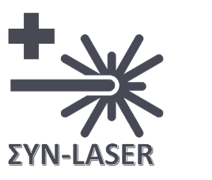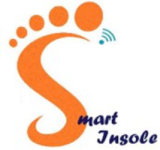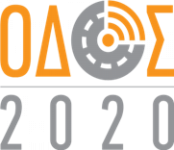National Projects
The main goal of the joint action "Research - Create - Innovate" is to connect research and innovation with entrepreneurship and to strengthen the competitiveness, productivity and extroversion of companies to international markets, with the aim of transition to quality innovative entrepreneurship and increase in domestic added value.
The aim of this action is the direct and effective channeling of the available resources for the promotion of research activities and the implementation of innovations in enterprises and especially in small and medium enterprises through a series of interventions.
Objectives of the action:
- Economic growth based on knowledge and sustainable specialization
- Integration of new knowledge and innovation in existing but also in new products, services, production systems and value chains
- Linking academic research to market needs and the economy.

Sympnia
The Sympnia project is a participatory research action that aims to provide targeted high-resolution information on current and projected levels of air pollution in the greater area of Thessaloniki.
Sympnia’s services are supported through an air quality monitoring and forecasting single platformwith a combined use of data from different sources.

SafeSchools
The SafeSchools project will develop a number of technologies related to the protection of schools and critical infrastructure against earthquake and other natural hazards. Among others solutions related to early warning and protection of school units and other critical buildings against earthquake will be available at the end of the project.

Esthisis
The object of the project is the development of a low cost and low energy wireless sensor system for the immediate detection of leaks in metallic piping systems for the transport of liquid and gaseous petroleum products in a noisy industrial environment

TekTrain
TekTrain project proposes a novel architecture, based on which a software framework and specialized smart devices will be built, offering the necessary tools and APIs towards making the educational programming process easy and fast.

ΣYN-LASER
The present project aims at the development of new processes for the assembly and the wire bonding of electronic circuits with digital laser printing and sintering technology, in order to integrate them into industrial processes of packaging and production of electronic circuits. In particular, the first application we describe is the assembly of electronic components with contact pad sizes smaller than the minimum dimension (0.2 mm) that the state of the art surface mount technology (SMT) can achieve. The proposed digital laser technology has a resolution of 10 micrometers, and allows accuracy in controlling the amount of conductive paste at the level of 10 nL. In addition, laser printing technology will be applied for the innovative manufacturing of electrical connections for integrated circuits in BGA packaging with a resolution of 10 micrometers. For the second application, printable materials with silver and copper nanoparticles will be designed, manufactured and characterized by two project partners, until their properties are optimized for high-conductivity and high mechanical strength interconnections.

μDoc.tS
The aim of the project is to develop an innovative and cost-effective solution to help in the complete transcription of historical manuscripts not only scholars but also archives, libraries, museums, etc.

e-Vision
The object of the project is the utilization of the recent important results in the field of mechanical vision, so the assistance systems for visually impaired people can now provide the ability to identify objects and persons at a semantic level.

Smart Insole
The aim of the project is to design and build a smart wearable sole with integrated tread pressure sensors and other micro-electronic devices, which will be based on a completely different architecture from the existing approaches, achieving both improved sensitivity and significant price reduction. At the same time, the accompanying software will provide easy-to-use tools for analyzing and visualizing complex gait data.

RADAR
The project "RADAR" conducts RESEARCH in the field of configurable "smart" microwave transceivers of the new generation combining nanotechnology with micro / nanoelectronics and pioneering 2D and 3D heterogeneous integration, CREATES products with enhanced functionality and taking advantage of a "unique business window opportunity" for applications from future 5G wireless networks to the upcoming ground and flying radar.

ODOS 2020
The ODOS 2020 project, through the collaboration of 3 Companies and 3 Research Bodies, aims to introduce an innovative technological solution, which through the use of the Network of Things ("Internet of Things" - IoT) and infrastructure-vehicle communication technologies, implements collaborative applications in the field of Intelligent Transport Systems without substantial and costly interventions on the road, contributing significantly to the increase of road safety and the safe maintenance of the infrastructure. The complete technological solution is addressed to all types of vehicles (passenger cars, trucks, motorcycles,…) and requires minimal to zero equipment on the part of the vehicles. The proposed solution is based on the integration of a network of micro and nano sensors in special infrastructure components placed on the road, which collect real-time information presented on the terminals (smart phones, tablets integrated or not, etc.) in the form of drivers smart mobile applications that give the relevant announcements / information, warnings and recommendations to drivers and infrastructure operators while promoting road safety, transport efficiency, and timely troubleshooting of infrastructure.

ΕνΑυΣυ
Harvesting the untapped energy provided by ambient sources can provide power to sensors and micro devices, such as micro-antennas for wireless communications, without the need of changing batteries. Such a harvesting system can both enable monitoring of a structure and reduce downtime cost, especially in structural components being difficult or dangerous to access. Among energy harvesting material sources, piezoelectric materials are proved to be more efficient in terms of power density. The current project aims to the development of an autonomous system with respect to electric energy for monitoring and wireless transfer of sensory signals from wind turbine blades. The project’s partner scheme includes two top research labs for mechatronics and piezoelectrics and two industrial partners highly specialized in microelectronics and in the management of wind energy parks. The outcome is expected to provide extremely high added value to all partners, since the proposed system is novel and can be extended easily to a vast variety of structural applications.

ANASA
The object of the project concerns the development and construction of a system with dual optical sensor, low cost with emphasis on the ability to distinguish the type of fuel as well as the detection of sulfur content and related compounds. The proposed dual optical sensor system consists of two subsystems and will be applied to a (bypass) conductor of the main supply conductor in the system to be applied

DIAKRIVOSI
The scope of the project concerns the detection of imminent or suddenly appearing faults in electromechanical systems of motion or electricity production. . The added value lies in the early prediction or highlighting of errors in critical industrial systems with the aim of reducing maintenance costs and optimizing the operational status of these systems.

Pleione
The Pleiades Community comprises of all individuals and organizations contributing in achieving the Clusters’ mission. The Cluster community is not only formed by contributors to the technology, but also those who contribute in building the ecosystem and making it sustainable over time.

Co-Protect
"Cluster of Interoperable and holistic civil protection systems", acronym "COPROTECT", as a coordinated effort of technological companies in Greece, aims to bring together and upgrade products, systems and services related to the management and response of natural disasters, environmental crises and emergencies civil protection the eligible field of activity (thematic field) Environment & Sustainable Development - Climate Change.

Digitsense
The object of the DIGITSENSE Research Program is the development of an innovative intelligent digital-twin of ships' energy systems which will constitute an integrated platform for the collection, processing and visualization of the measurements from the various sensors installed on the ship, while at the same time these measurements will feed simulation models (graded levels of physical depth) of the ship's energy systems.

ConsentMe
ConsentMe is a research project, with code T2EDK-02902 and title “Development of Consent Management System (ConsentMe)”. The project is part of the National Action “Research, Create, Innovate” and is funded by the Operational Program “COMPETITIVENESS, ENTREPRENEURSHIP & INNOVATION” (EPANEK) 2014-2020.
In 2016, the European Union passed the General Data Protection Regulation 679/2016, also known as the GDPR, and entered into force in May 2018. Its purpose is to ensure control by natural person of the processing of their personal data by organizations-companies.
One of the basic principles of the Regulation is the Principle of Legality of processing, such as the satisfaction of the need for proof by those who process personal data regarding the legal act of processing. It can be based, among other things (legal interest, the conclusion of a contract, legal obligation, performance of a public duty), and on the consent of a natural person.

ICE
This project aims to develop an innovative product named Innovative Cultural Experience (ICE), which combines the following cutting-edge technologies:
1. Transparent Window - touch screen, interactive technology, 2. Augmented Reality, monuments-exhibits, 3D immersive video, intangible heritage narration. The product will provide a unique atomic or mass-touring experience, utilizing information based on material and intangible cultural heritage, through narrative scenarios.
ICE will be a Transparent Window’s advanced state of the art, in which any exhibit that will enter it will be able to display visually enhanced and augmented Reality information to the user / visitor (admin enabled). In addition, visitors can, using the built-in 3D Camera, upload their own Video with their views or impressions from the exhibit.
